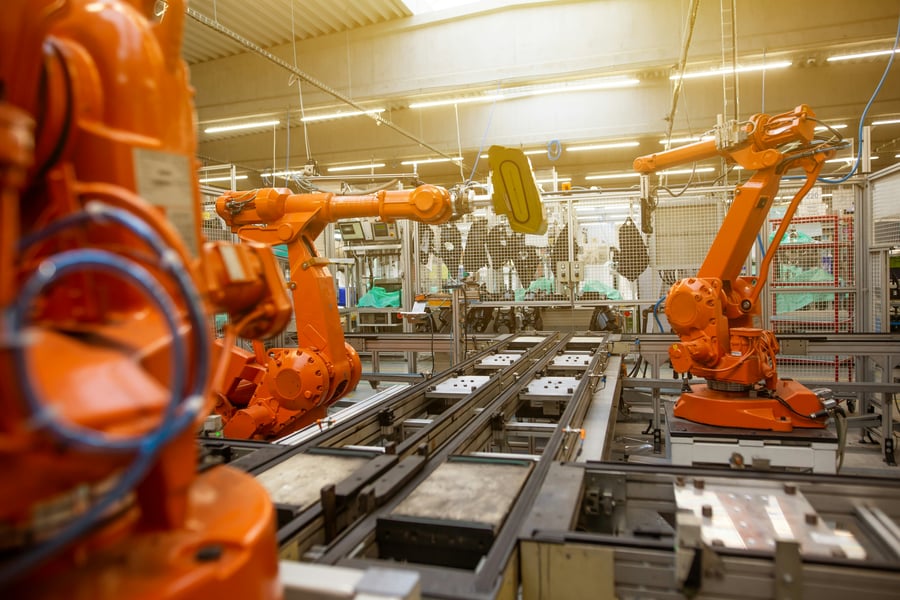In today's industrial landscape, where maintenance costs represent a substantial investment, the integration of predictive maintenance — fueled by real-time Internet of Things (IoT) data and machine learning (ML) — stands out as a pivotal strategy. This blog is a quick exploration of our step-by-step predictive maintenance guide. Read along to learn how you can establish an effective predictive maintenance program for capital-intensive assets, ranging from heavy machinery and fleets to manufacturing equipment.
As we delve into some of the details covered in our guide, we'll explore how predictive maintenance can reduce costs, enhance productivity, and give organizations a competitive edge for the future.
What’s the Real Need for Predictive Maintenance Anyways?
To say it simply: You’re losing out and costing yourself a lot.
Maintenance management faces a perpetual challenge of balancing costs across various tradeoffs, leading to more than $60 billion in losses annually due to ineffective strategies.
Predictive maintenance, involving data analysis to identify operational anomalies and potential equipment failures, emerges as a transformative solution for businesses with capital-intensive assets. By harnessing ML and real-time insights, predictive maintenance minimizes downtime, reduces labor time, and extends asset life, surpassing traditional maintenance methods.
 Here are eight steps you can take to adopt predictive maintenance into your business operations effectively:
Here are eight steps you can take to adopt predictive maintenance into your business operations effectively:
Step 1: Select Your Use Case
Initiating a predictive maintenance program necessitates a clear understanding of your business's pain points. Identifying a use case tailored to proactively address specific maintenance challenges and maximize operational efficiency is crucial.
Real-world use cases across industries demonstrate the versatility and effectiveness of predictive maintenance. In terms of your own organization, you will need to evaluate the areas where you believe predictive maintenance should provide tangible benefits and craft your strategy with that as the starting point.
Step 2: Understand Diverse Data Sourcing
The proliferation of IoT is a cornerstone of predictive maintenance. Cheap sensors and data storage along with powerful data processing has made predictive maintenance largely accessible. Many different kinds of data are touched with predictive analytics.
Data from IoT devices monitoring asset aspects such as temperature, vibration, pressure, fluid levels, and sound are crucial. Additionally, nondestructive techniques like vibration monitoring, thermography, parametric analysis, and visual inspection contribute unique datasets and enhance maintenance manager decision-making.
Step 3: Account for the Data Challenges at Play
Identifying relevant datasets is only the beginning. Understanding the data's origins, executing measurements like failure modes and effects analysis (FMEA), and ensuring the definability of variables are essential.
Also, teams should be cautious that building a predictive model without a comprehensive understanding of the data may lead to inaccurate predictions, risking costly run-to-failure incidents or unnecessary replacements. Data quality and model explainability are paramount.
Step 4: Set Up a Flexible, Holistic Data Strategy
Manipulating data requires a pointed and holistic approach. Dimensionality reduction and multivariate analysis become essential when dealing with thousands of sensors, ensuring the identification of relevant sensors and predictive aggregations.
Predictive maintenance approaches like reliability-centered maintenance complement each other, providing a comprehensive strategy for mitigating failure risk.
Step 5: Get Predictive With It
Combining data from various sources and types enables robust and accurate predictive models. Predictive algorithms, analytics, and ML can be applied to produce models predicting failures accurately. Rigorous testing ensures the model's reliability, minimizing false negatives and false positives.
Step 6: Take a Look at Visualization
Visualization closes the feedback loop in predictive maintenance, allowing maintenance managers and staff to interpret predictive model outputs effectively. Robust data science tools enable easy access and comprehension of outputs, ensuring consistent feedback across the entire team, from analysts to technicians. Seamless communication is key for efficient operations!
Step 7: Turn to Iteration, Deployment, and Secondary Analytics
Deploying a predictive maintenance model into production involves working with real-time data and integrating feedback directly into the process. Secondary analytics come into play post-repair decisions, considering the cost implications of taking high-capital assets out of service.
Step 8: Bolster Self-Maintenance and Continuous Opportunity
Predictive maintenance aligns with the future of AI, where operations become self-maintenance with minimal human interaction. AI systems will monitor thousands of variables, applying deep learning to detect information that might lead to failure.
As predictive maintenance matures, larger opportunities arise, potentially turning high-value assets into massive revenue generators that you wouldn’t want to miss out on.
What About the Generative AI Hype?
Just as predictive maintenance has revolutionized industries, Generative AI is set to redefine manufacturing by offering new application areas and cost-cutting opportunities. A survey report that features responses from hundreds of senior AI professionals indicates a significant adoption trend, with 52% of manufacturing organizations likely to use Generative AI or LLM technology in the next year.
Preparing for this shift positions organizations at the front of the pack, ready to innovate and scale new technologies. Focusing on bolstering initiatives such as predictive maintenance use cases is a step in the right direction of developing a culture keen to keep up with the race.
TL;DR
Establishing a robust predictive maintenance program is a strategic imperative for businesses with capital-intensive assets. By following these step-by-step guidelines, organizations can harness the power of IoT, ML, and real-time insights to revolutionize their maintenance strategies.
Predictive maintenance not only saves costs but also opens the door to larger opportunities, paving the way for a future where operations are seamlessly self-maintained, with AI as a guiding force to unlock more real value.





